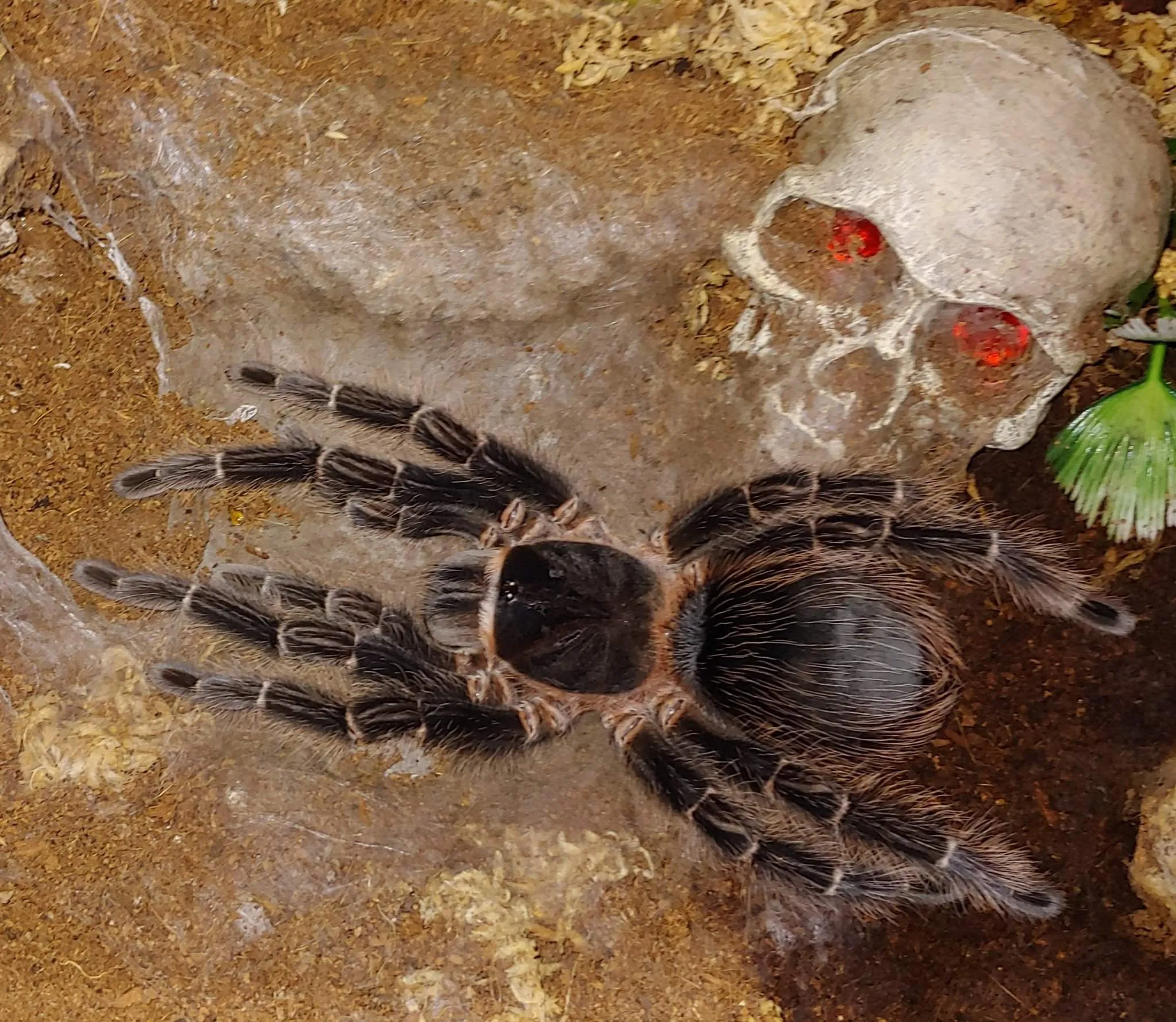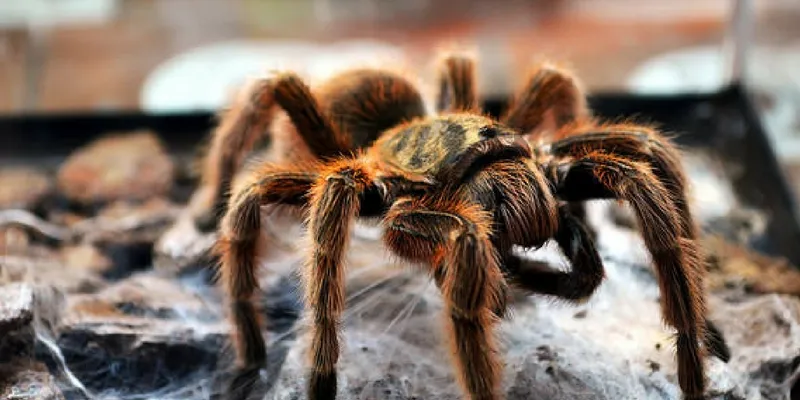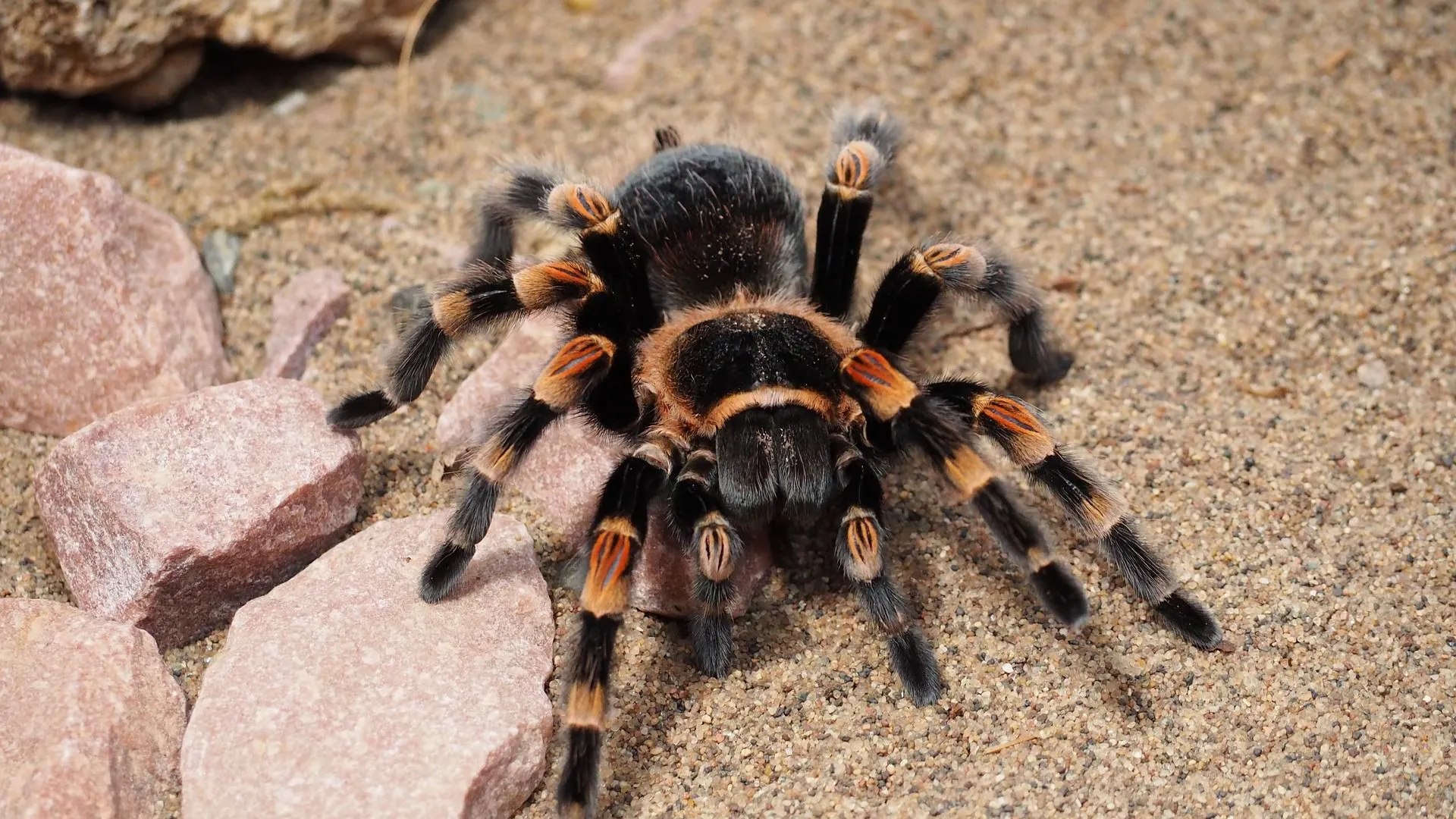What is a Tarantula?
Tarantulas are large and hairy spiders belonging to the family Theraphosidae. These impressive arachnids are renowned for their size, with some species boasting leg spans of over 10 inches. Found in a wide array of habitats across the globe, tarantulas exhibit remarkable diversity in their appearance, behavior, and ecological roles. Despite their intimidating appearance, tarantulas are generally not aggressive towards humans, and their venom is typically not considered life-threatening. They play a crucial role in their ecosystems, helping to control populations of insects and other invertebrates. The fascination with tarantulas extends to their unique life cycle, including the intriguing process of molting. This process allows them to shed their old exoskeleton and grow.
Physical Characteristics
Size and Appearance

Tarantulas are distinguished by their large size, robust bodies, and hairy legs. Their size varies greatly depending on the species, with some of the largest tarantulas, like the Goliath birdeater, capable of reaching a leg span of over a foot. The body of a tarantula is divided into two main parts the cephalothorax, which is the fused head and chest, and the abdomen. The cephalothorax houses the eyes, mouthparts, and legs, while the abdomen contains the digestive and reproductive organs. Their coloration ranges widely, from earthy browns and blacks to vibrant blues, oranges, and reds, which often serve as camouflage in their natural environments.
Varied Colors and Patterns
The diverse coloration and patterns of tarantulas are among their most captivating features. These spiders display a spectrum of colors, including various shades of brown, black, gray, and even iridescent blues and vibrant oranges. The patterns can be solid, striped, spotted, or a combination of these, with some species having unique markings that help them blend into their surroundings. This coloration serves multiple purposes, including camouflage to avoid predators, attracting mates, and regulating body temperature. The intricate patterns found on some tarantulas add to their aesthetic appeal and make them a popular choice for pet owners and enthusiasts alike. The colors can also be used to identify different species.
Habitat and Distribution
Where Tarantulas Live

Tarantulas are found in a variety of habitats across the world, primarily in tropical and subtropical regions. They inhabit every continent except Antarctica, with diverse species thriving in North and South America, Africa, Asia, and Australia. Their presence in different ecosystems underscores their adaptability and resilience. Tarantulas often prefer warmer climates and can be found in forests, grasslands, deserts, and even urban environments. They generally seek out environments that provide shelter, such as burrows, under rocks, or in trees, which also help to regulate their body temperature and protect them from predators. The specific distribution of each species is determined by factors like climate, food availability, and the presence of suitable habitats.
Different Habitats
The habitats of tarantulas vary greatly, mirroring the diverse climates and terrains they inhabit. Some species are terrestrial, living in burrows they dig in the ground or occupy pre-existing holes. Other species are arboreal, spending their lives in trees and utilizing their strong claws to cling to bark. Certain tarantulas are adapted to live in arid environments, where they burrow deep to escape the heat. Others are found in humid rainforests, where they may seek shelter under leaf litter or in rock crevices. This adaptability allows tarantulas to colonize a wide range of ecosystems, each presenting its own challenges and opportunities. The specific habitat a tarantula chooses is critical for its survival, as it provides protection from predators, access to food, and optimal environmental conditions.
Diet and Feeding Habits
What Tarantulas Eat

Tarantulas are primarily carnivorous predators, and their diet consists mainly of insects and other invertebrates. They are opportunistic hunters and will feed on whatever prey is available in their environment. Common food sources include crickets, cockroaches, grasshoppers, and beetles. Larger species of tarantulas can also consume small vertebrates, such as mice, lizards, and even small birds. The tarantula’s hunting strategy involves ambushing prey, using their fangs to inject venom that immobilizes and starts to digest the food. They then use their mouthparts to liquefy the prey and consume the nutrient-rich fluids, leaving behind the exoskeleton and other indigestible parts.
Feeding Frequency
The feeding frequency of tarantulas can vary depending on the species, age, and environmental conditions. Young tarantulas, which are in the growth stage, typically need to eat more frequently than adults. It is not unusual for them to feed several times a week. Adult tarantulas, especially those in captivity, can often go for extended periods without food. They may feed only once every few weeks or even months. Factors such as temperature and the tarantula’s overall health will affect its appetite. It’s important to ensure that tarantulas have access to a clean water source at all times, as they need hydration to survive. Overfeeding is a common mistake, so it’s important to observe your tarantula and feed it only when necessary, and not just because it is a habit.
Unique Behaviors
Molting Process

Molting is a crucial process in a tarantula’s life, where they shed their exoskeleton to grow. Since the exoskeleton does not grow, the tarantula must shed it periodically. This process can take several hours or even days, depending on the size of the tarantula. Before molting, the tarantula will often stop eating and retreat to a safe place, such as its burrow. The old exoskeleton splits open, and the tarantula slowly emerges, revealing a new, softer exoskeleton underneath. During this vulnerable time, the tarantula is defenseless and more susceptible to predation. The new exoskeleton hardens over time, allowing the tarantula to continue growing. Molting is also how tarantulas regenerate lost limbs, making it an essential part of their survival.
Defensive Mechanisms
Tarantulas have several defensive mechanisms to protect themselves from predators. One of the most well-known is their ability to flick urticating hairs, which are barbed hairs located on their abdomen. When threatened, the tarantula will rub its abdomen with its legs, releasing these hairs into the air. These hairs can cause intense irritation to the eyes, skin, and respiratory system of potential predators. Additionally, tarantulas have powerful fangs and can bite if they feel threatened. Their bites typically inject venom, which is not lethal to humans, but can cause pain and discomfort. Some tarantulas also have aposematic coloration, using vibrant colors to warn potential predators of their toxicity or defensive capabilities. The use of different defense methods shows that these spiders are adapted well to their environment.
Reproduction and Life Cycle
Mating and Egg Laying

The reproductive cycle of tarantulas is an intriguing process. Mating usually involves the male spider transferring sperm to the female. Before mating, the male must create a sperm web and deposit his sperm onto it, then transfer the sperm into special storage organs called palps. The male then approaches the female carefully, tapping on her legs to signal his intentions. If she accepts, he mates with her, delivering the sperm. After mating, the female will lay her eggs and encase them in a silken egg sac, which she protects. The number of eggs varies depending on the species, with some species producing hundreds of eggs per sac. The female typically guards the egg sac until the spiderlings hatch, demonstrating protective behavior. The female will care for the spiderlings for a time after hatching.
Lifespan of Tarantulas
Tarantulas have a relatively long lifespan compared to many other invertebrates. The longevity of a tarantula depends on the species and sex. Female tarantulas generally live much longer than males. Some female tarantulas can live for over 20 years in captivity, and potentially even longer in the wild, and some are recorded to live for over 30 years. Males, however, typically die within a few years after reaching maturity, often shortly after mating. The long lifespan of female tarantulas is due to the fact that they don’t have to put energy into producing sperm. The conditions in their environment, like food availability and temperature, can also affect their lifespan. The longevity of these creatures makes them a long-term commitment for pet owners.
Tarantulas and Humans
Tarantulas as Pets

Tarantulas have gained popularity as pets, and many species are readily available in the pet trade. Their relatively low maintenance requirements, unique appearance, and fascinating behavior make them attractive to hobbyists. Owning a tarantula requires careful consideration, including understanding their specific needs and providing an appropriate habitat. This includes providing a suitable enclosure, temperature, humidity, and a diet of live insects. It’s also crucial to handle them with care, as they can bite if provoked. When considering tarantulas as pets, it’s important to research the specific needs of the species you are interested in and ensure you can provide the appropriate care. They are not interactive pets, and are more for observation.
Conservation Status
The conservation status of tarantulas varies depending on the species and their geographic distribution. Some tarantula species are widespread and have healthy populations, while others face threats that impact their survival. Habitat destruction, caused by deforestation, urbanization, and agricultural expansion, is a major threat to tarantula populations. Over-collection for the pet trade, especially of rare or desirable species, can also deplete wild populations. Climate change poses an increasing challenge, altering habitats and disrupting ecological balance. Conservation efforts are crucial for protecting tarantulas, including habitat preservation, captive breeding programs, and sustainable practices in the pet trade. Conservation statuses range from Least Concern to Critically Endangered.
